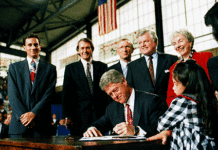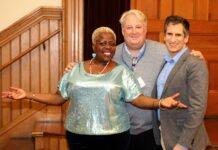By David B. Caruso and Jeff Donn
A federal crackdown on illicit foreign supplies of human growth hormone has failed to stop rampant misuse, and instead has driven record sales of the drug by some of the world’s biggest pharmaceutical companies, an Associated Press investigation shows.
The crackdown, which began in 2006, reduced the illegal flow of unregulated supplies from China, India and Mexico.
But since then, Big Pharma has been satisfying the steady desires of U.S. users and abusers, including many who take the drug in the false hope of delaying the effects of aging.
From 2005 to 2011, inflation-adjusted sales of HGH were up 69 percent, according to an AP analysis of pharmaceutical company data collected by the research firm IMS Health. Sales of the average prescription drug rose just 12 percent in that same period.
Unlike other prescription drugs, HGH may be prescribed only for specific uses. U.S. sales are limited by law to treat a rare growth defect in children and a handful of uncommon conditions like short bowel syndrome or Prader-Willi syndrome, a congenital disease that causes reduced muscle tone and a lack of hormones in sex glands.
The AP analysis, supplemented by interviews with experts, shows too many sales and too many prescriptions for the number of people known to be suffering from those ailments. At least half of last year’s sales likely went to patients not legally allowed to get the drug. And U.S. pharmacies processed nearly double the expected number of prescriptions.
Peddled as an elixir of life capable of turning middle-aged bodies into lean machines, HGH — a synthesized form of the growth hormone made naturally by the human pituitary gland — winds up in the eager hands of affluent, aging users who hope to slow or even reverse the aging process.
Experts say these folks don’t need the drug, and may be harmed by it. The supposed fountain-of-youth medicine can cause enlargement of breast tissue, carpal tunnel syndrome and swelling of hands and feet. Ironically, it also can contribute to aging ailments like heart disease and Type 2 diabetes.
Others in the medical establishment also are taking a fat piece of the profits — doctors who fudge prescriptions, as well as pharmacists and distributors who are content to look the other way. HGH also is sold directly without prescriptions, as new-age snake oil, to patients at anti-aging clinics that operate more like automated drug mills.
Years of raids, sports scandals and media attention haven’t stopped major drugmakers from selling a whopping $1.4 billion worth of HGH in the U.S. in 2011. That’s more than industry-wide annual gross sales for penicillin or prescription allergy medicine. Anti-aging HGH regimens vary greatly, with a yearly cost typically ranging from $6,000 to $12,000 for three to six self-injections per week.
Across the U.S., the medication is often dispensed through prescriptions based on improper diagnoses, carefully crafted to exploit wiggle room in the law restricting use of HGH, the AP found.
HGH is often promoted on the Internet with the same kind of before-and-after photos found in miracle diet ads, along with wildly hyped claims of rapid muscle growth, loss of fat, greater vigor and other exaggerated benefits to adults far beyond their physical prime. Sales also are driven by the personal endorsement of celebrities such as actress Suzanne Somers.
Pharmacies that once risked prosecution for using unauthorized, foreign HGH — improperly labeled as raw pharmaceutical ingredients and smuggled across the border — now simply dispense name brands, often for the same banned uses. And usually with impunity.
Eight companies have been granted permission to market HGH by the U.S. Food and Drug Administration (FDA), which reviews the benefits and risks of new drug products. By contrast, three companies are approved for the diabetes drug insulin.
The No. 1 maker, Roche subsidiary Genentech, had nearly $400 million in HGH sales in the U.S. in 2011, up an inflation-adjusted two-thirds from 2005. Pfizer and Eli Lilly were second and third with $300 million and $220 million in sales, respectively, according to IMS Health. Pfizer now gets more revenue from its HGH brand, Genotropin, than from Zoloft, its well-known depression medicine that lost patent protection.
On their face, the numbers make no sense to the recognized hormone doctors known as endocrinologists who provide legitimate HGH treatment to a small number of patients.
Endocrinologists estimate there are fewer than 45,000 U.S. patients who might legitimately take HGH. They would be expected to use roughly 180,000 prescriptions or refills each year, given that typical patients get three months’ worth of HGH at a time, according to doctors and distributors.
Yet U.S. pharmacies last year supplied almost twice that much HGH — 340,000 orders — according to AP’s analysis of IMS Health data.
While doctors say more than 90 percent of legitimate patients are children with stunted growth, 40 percent of 442 U.S. side-effect cases tied to HGH over the last year involved people age 18 or older, according to an AP analysis of FDA data. The average adult’s age in those cases was 53, far beyond the prime age for sports. The oldest patients were in their 80s.
Some of these medical records even give explicit hints of use to combat aging, justifying treatment with reasons like fatigue, bone thinning and “off-label,” which means treatment of an unapproved condition
Even Medicare allowed 22,169 HGH prescriptions in 2010, a five-year increase of 78 percent, according to data released by the Centers for Medicare and Medicaid Services in response to an AP public records request.
And those figures don’t include HGH sold directly by doctors without prescriptions at scores of anti-aging medical practices and clinics around the country. Those numbers could only be tallied by drug makers, who have declined to say how many patients they supply and for what conditions.
First marketed in 1985 for children with stunted growth, HGH was soon misappropriated by adults intent on exploiting its modest muscle- and bone-building qualities. Congress limited HGH distribution to the handful of rare conditions in a 1990 law, overriding the generally unrestricted right of doctors to prescribe medicines as they see fit.
FDA regulations ban the sale of HGH as an anti-aging drug. In fact, since 1990, prescribing it for things like weight loss and strength conditioning has been punishable by five to 10 years in prison.
Steve Kleppe, of Scottsdale, Ariz., a restaurant entrepreneur who has taken HGH for almost 15 years to keep feeling young, said he noticed a price jump of about 25 percent after the block on imports. He now buys HGH directly from a doctor at an annual cost of about $8,000 for himself and the same amount for his wife.
Many older patients go for HGH treatment to scores of anti-aging practices and clinics heavily concentrated in retirement states like Florida, Nevada, Arizona and California.
These sites are affiliated with hundreds of doctors who are rarely endocrinologists. Instead, many tout certification by the American Board of Anti-Aging and Regenerative Medicine, though the medical establishment does not recognize the group’s bona fides.
The clinics offer personalized programs of “age management” to business executives, affluent retirees and other patients of means, sometimes coupled with the amenities of a vacation resort. The operations insist there are few, if any, side effects from HGH. Mainstream medical authorities say otherwise.
A 2007 review of 31 medical studies showed swelling in half of HGH patients, with joint pain or diabetes in more than a fifth. For proof that the drug works, marketers turn to images like the memorable one of pot-bellied septuagenarian Dr. Jeffry Life, supposedly transformed into a ripped hulk of himself by his own program available at the upscale Las Vegas-based Cenegenics Elite Health. (He declined to be interviewed.)
These promoters of HGH say there is a connection between the drop-off in growth hormone levels through adulthood and the physical decline that begins in late middle age. Replace the hormone, they say, and the aging process slows.
“It’s an easy ruse. People equate hormones with youth,” said Dr. Tom Perls, a leading industry critic who does aging research at Boston University. “It’s a marketing dream come true.” — AP












